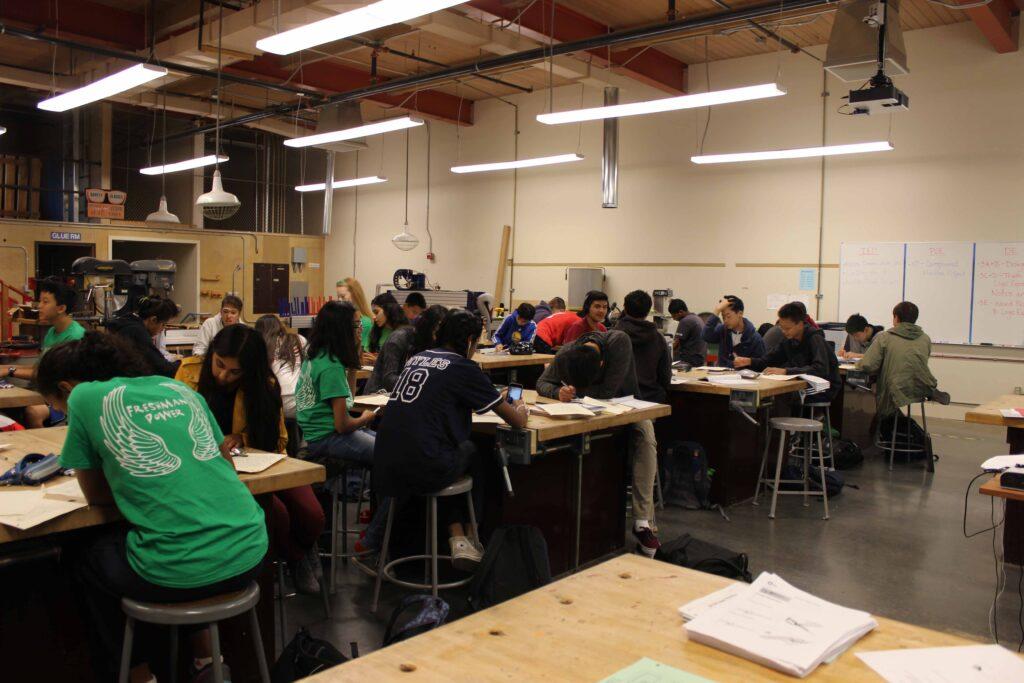Senior Trishla Pokharna has seen a lot in her four years of engineering as a member of the first group of students to go through the school's first four-year engineering program.
She recalls walking into a dingy, dusty woodshop as a freshman. Today, that same workshop has been revamped and equipped into a room with 3-D printers, laser cutters and more state of the art equipment.
Pokharna is one of eight seniors who will complete all four engineering electives offered at the school this year. They are among the 145 students currently taking one of the engineering classes, according to registrar Jeanne Jamieson.
The school’s engineering program is an offshoot of Project Lead the Way, introduced here in 2013, which envisioned a series of engineering courses, including both programming and physical engineering. Since then, a new engineering class has been added each year — Introduction to Engineering Design, Principles of Engineering, Digital Electronics and this year’s Engineering Design and Development.
Pokharna, who hopes to pursue an engineering career, especially likes the atmosphere of the classes, as students have a light outside-of-class workload.
According to Pokarna, Introduction to Engineering, the first class, teaches the basic principles and allows students to make robots. Next they use these principles in Digital Electronics to incorporate circuits. In Engineering Design and Development, they are creating a year-long engineering project.
For senior Rachel Won, who is also in her final year of the program and plans to pursue engineering, these classes offer materials and approaches that other classes lack, saying that math and sciences class don’t offer as much hands-on experiences as engineering does.
Won added that the final senior capstone course, EDD, is especially beneficial as the class focuses on creating small scale projects and machinery, mirroring the lives of real-life engineers.
Won calls the engineering classes “low-stress, high-quality classes.” Students learn a lot of cooperation and are able to be creative, and the engineering teachers Matthew Welander and Audrey Warmuth are “willing to help” and let people “use their resources in any way.”
However, because the Class of 2017 is the first to experience all four courses, they have also been the “guinea pigs.” According to Pokharna, the classes have sometimes moved too fast or too slow for students.
The teachers have also run into numerous challenges and had to make adjustments along the way.
“It’s been an issue to get signups and communicate what’s going on, and I think there’s some misconceptions about what the class is like,” Warmuth said.
Added Warmuth: “The one thing I wish people would know more about the engineering program is that if they were in the classes, they would realize how much they enjoy them. Some kids think that you have to be a math genius, but you don’t.”
In addition to the problems many new electives face recruiting students, the engineering teachers had facilities problems rarely experienced by teachers in other disciplines.
“The engineering room was the old woodshop room, so it had been unused for at least three years and was a mess,” Warmuth said. “We spent three summers trying to clean it out and shape it the way we want, and there’s still some more work we need to do.”
Even so, with all four classes now running, the engineering program appears to be closing in on the vision she had four years ago when she first entered that dingy, dusty room.
























